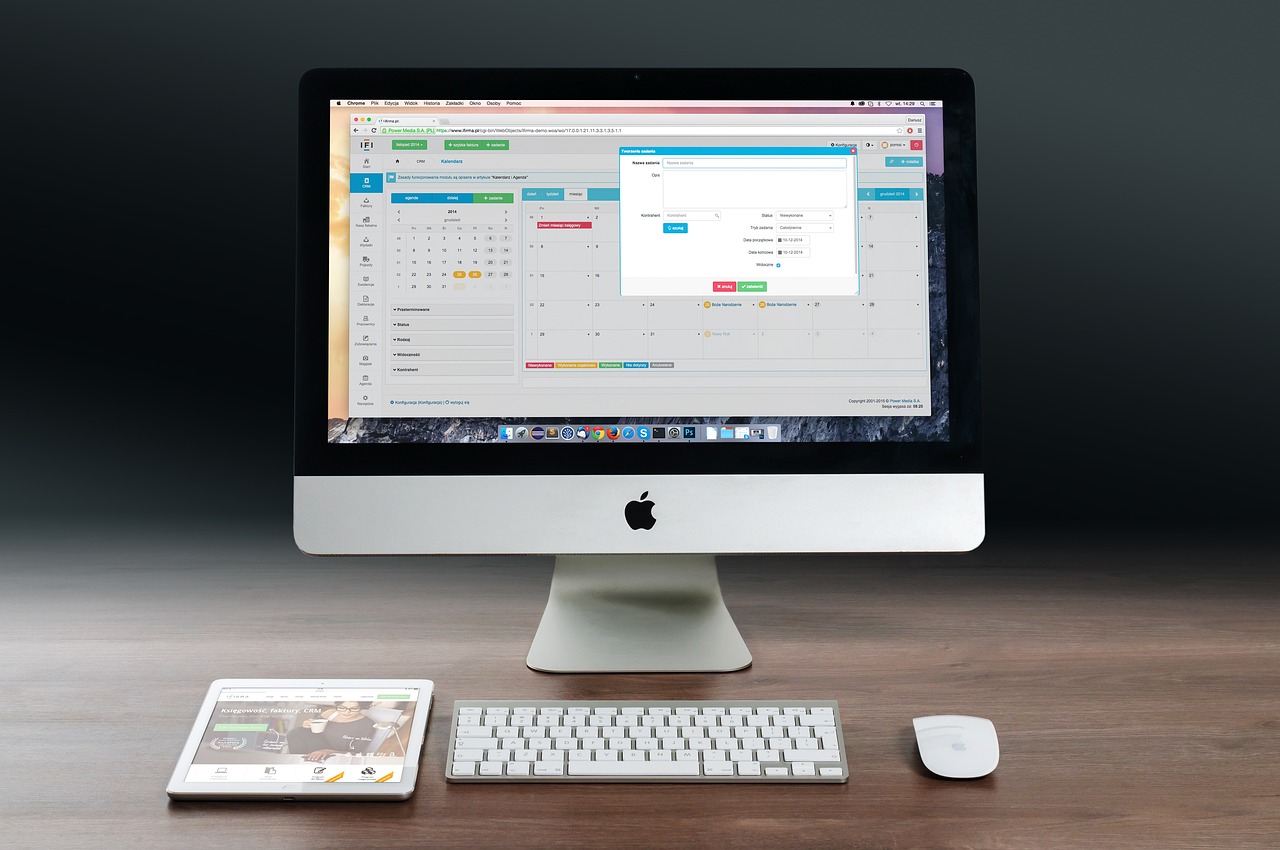What is Computer?
A Computer or PC is an electronic device that provides information and plays duties according to a set of instructions referred to as a program. Computer systems can be classified into various kinds based totally on their length, capability, and reason.
Table of Contents
Types of Computer
Computers come in various types, each designed for specific tasks. Here are some common types.
- Personal Computer
- Server
- Mainframes Computer
- Supercomputer
- Quantum Computer
Troubleshooting Computer Issue like Network Connectivity, Sound and Audio issue, Display and Video problem, Driver issue, Boost PC performance, Operating System Error, Password Forgot and others. Click Here.
Personal Computers (PCs):

Desktops: These are the traditional computers that consist of a separate monitor, keyboard, and central processing unit (CPU) housed in a case. They are flexible and capable of handling a wide range of tasks.
A desktop is the visual interface and primary workspace on a computer screen, providing a user-friendly environment for accessing applications, files, and system settings. Typically, it serves as the background space where icons, shortcuts, and widgets are arranged, allowing users to customize their computing experience.
Key features of a desktop include the taskbar, which displays running applications and system notifications, and the desktop icons, serving as quick links to essential files or programs. Users can personalize their desktop backgrounds, selecting images or designs that reflect their preferences.
The desktop acts as a launching pad, providing easy access to the computer’s functionalities. Users can organize their desktops to suit their workflow, creating folders, arranging icons, and customizing settings. Additionally, widgets or gadgets can be added to the desktop for quick access to information like weather, calendar events, or system performance. In summary, the desktop is the user interface that facilitates interaction with a computer, offering a visually organized space for managing applications and files, and allowing users to tailor their computing environment to meet their needs and preferences.

Laptops: Portable computers with a built-in screen and keyboard. Laptops are convenient for on-the-go computing.
A laptop, short for “notebook computer,” is a portable and compact computing device designed for ease of use and mobility. Laptops combine the essential components of a desktop computer, including a keyboard, display, and internal components, into a single, portable unit.
Key features of a laptop include its foldable design, allowing users to open and close the device like a clamshell. The integrated display and keyboard make it a self-contained computing solution, eliminating the need for external peripherals in most cases. Laptops are equipped with a rechargeable battery, enabling users to work, browse, or engage in various activities without being tethered to a power source.
Laptops are available in a range of sizes and configurations, designed to meet diverse requirements and cater to individual preferences. Ultrabook, for example, prioritize slim and lightweight designs for maximum portability, while gaming laptops emphasize powerful graphics and processing capabilities. The versatility of laptops makes them suitable for a wide range of tasks, from productivity and entertainment to creative endeavors.
Additionally, laptops often include features such as built-in webcams, speakers, and various ports for connectivity. The availability of wireless technologies like Wi-Fi and Bluetooth further enhances the convenience and functionality of laptops, enabling users to connect to networks and peripheral devices effortlessly.
In summary, a laptop is a portable and versatile computing device that provides users with the flexibility to work, create, and stay connected while on the go. Its compact design, integrated components, and battery-powered operation make it a popular choice for individuals who require computing capabilities outside the confines of a fixed desktop setup.
Servers:
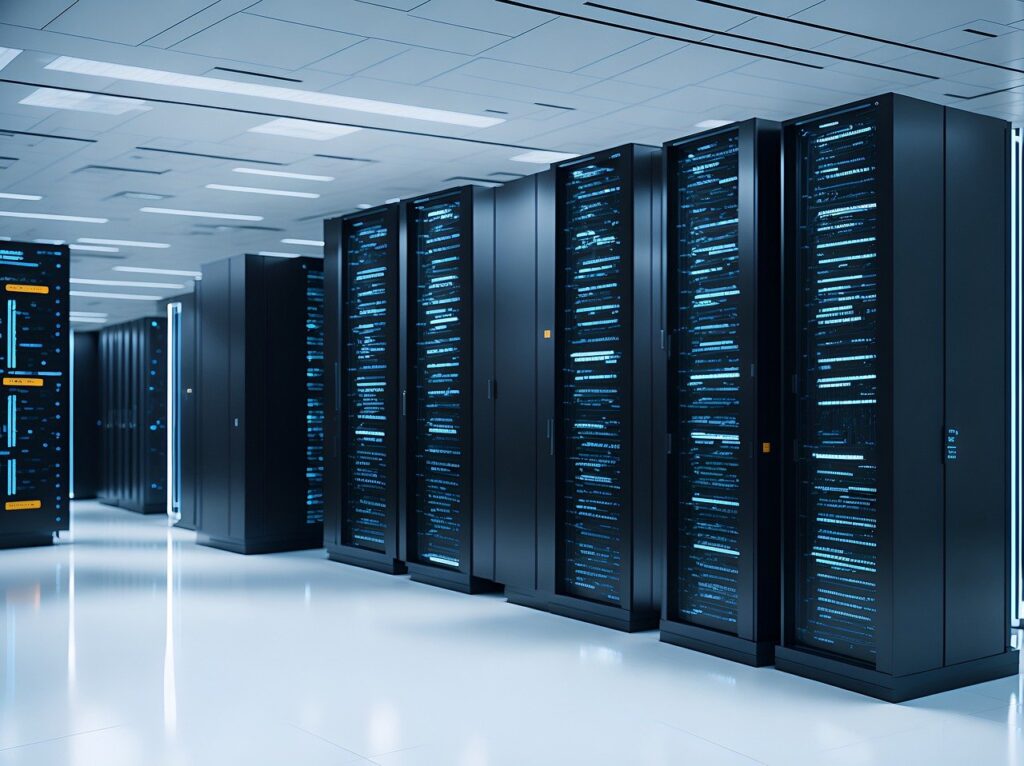
A server is a specialized computer or software system that provides network services, resources, or functionalities to other computers, known as clients, within a network. Unlike personal computers, servers are designed to handle large-scale data processing, manage network traffic, and fulfill specific roles, such as hosting websites, storing files, or running applications.
Servers come in various forms, including dedicated hardware machines and virtual servers operating on powerful computer systems. They are characterized by their reliability, stability, and high-performance capabilities to ensure uninterrupted service delivery.
Common types of servers include web servers, which host and deliver websites to users; file servers, responsible for managing and sharing files across a network; and database servers, dedicated to storing and processing data for applications. Additionally, servers play a crucial role in tasks like email hosting, application hosting, and centralized management of network resources.
Server hardware is often optimized for continuous operation, featuring redundancy measures like multiple power supplies and hard drives to minimize downtime. Server software, on the other hand, includes operating systems and applications tailored for server-specific tasks.
In essence, servers form the backbone of modern computing, facilitating the efficient exchange of information and the delivery of various online services that we rely on daily. Their robust capabilities make them indispensable for businesses, organizations, and individuals seeking reliable and scalable solutions for network-related functions.
File Servers: Used to store and manage files for multiple users in a network.
Web Servers: Host websites and deliver web pages to users over the internet.
Database Servers: Manage and retrieve data from databases.
Mainframes Computer:
A mainframe computer is a powerful and high-performance computing system designed for handling large-scale data processing and critical business applications. Unlike personal computers or servers, mainframes excel in processing vast amounts of data concurrently, making them ideal for complex computations and tasks requiring high reliability.
Mainframes are known for their scalability, supporting numerous users and applications simultaneously. They play a crucial role in industries such as finance, government, and large enterprises where the processing of substantial data volumes is a routine necessity. Mainframes often serve as the backbone for core business operations, managing databases, transactions, and mission-critical applications.
Key features of mainframes include robust hardware architecture, extensive input/output capabilities, and the ability to execute multiple tasks concurrently with high throughput. They are characterized by reliability, availability, and serviceability (RAS), ensuring continuous operation and minimal downtime.
Mainframes have evolved over the years, adapting to technological advancements while retaining their focus on handling complex workloads efficiently. Despite the rise of distributed computing, mainframes continue to play a vital role in supporting the backbone of global business operations, emphasizing reliability, security, and scalability in their design and functionality. Large, powerful computers designed for handling massive amounts of data and simultaneous transactions. Large organizations frequently depend on mainframes for critical applications
Supercomputers:
A supercomputer is an advanced computing machine designed to perform highly complex calculations and process massive amounts of data at incredibly high speeds. These systems are at the forefront of computational capability, making them indispensable for scientific research, weather forecasting, simulation, and other computationally intensive tasks.
Supercomputers leverage parallel processing techniques, where multiple processors work simultaneously to solve intricate problems. This parallel architecture allows them to tackle large-scale simulations and computations that would be impractical for conventional computers.
Due to their extraordinary processing power, supercomputers are crucial for solving problems in fields like physics, climate modeling, molecular modeling, and cryptography. They are often used to simulate and analyze complex phenomena, aiding researchers in gaining insights and making advancements in various scientific disciplines.
Supercomputers are typically housed in specialized facilities due to their extensive power and cooling requirements. Prominent examples of supercomputers include those used by research institutions, government agencies, and technology companies, contributing significantly to advancements in scientific discovery and technological innovation. Extremely powerful machines designed to process complex scientific and engineering calculations. Supercomputers are used for tasks like weather forecasting, simulations, and research.
Quantum Computers:
A quantum computer is a cutting-edge type of computing device that leverages the principles of quantum mechanics to perform computations.In addition to superposition, quantum computers exploit entanglement, a quantum phenomenon where the state of one qubit is directly linked to the state of another, regardless of the physical distance between them. This interconnectedness allows quantum computers to process information in a highly parallel manner, potentially enabling them to solve certain problems much faster than classical computers.
Experimental computers that use the principles of quantum mechanics for processing information. They have the potential to solve certain complex problems much faster than traditional computers.
They may offer breakthroughs in solving problems that are currently computationally intractable for classical computers. However, building and maintaining stable quantum computers pose significant technical challenges due to the delicate nature of quantum states and the need for precise control over quantum interactions. Researchers and companies worldwide are actively working on developing practical and scalable quantum computers, marking an exciting frontier in the realm of computing and opening doors to new possibilities in the field of quantum information science.
Parts of Computer
A computer is a complex system composed of various components that work together to execute tasks and process information. The components of a computer system can be generally classified into two main categories: Hardware and Software. Hardware encompasses the physical, tangible elements, while software refers to the intangible programs and instructions that govern the computer’s operation. Together, they form the fundamental building blocks of a functional computing environment.
- Hardware Components: Central Processing Unit
- Memory (RAM and ROM)
- Storage Devices (HDD and SSD)
- Motherboard
- Power Supply Unit (PSU)
- Graphics Processing Unit (GPU)
- Software Component
Let’s delve into the details of the key parts of a computer:
Hardware Components: Central Processing Unit (CPU):
Central Processing Unit (CPU): The Central Processing Unit (CPU), often referred to as the “brain” of a computer, is a critical component responsible for executing instructions and performing calculations. It plays a central role in determining a computer’s overall processing power and performance. Often referred to as the brain of the computer, the CPU executes instructions and performs calculations. It interprets and processes data stored in the computer’s memory.
The CPU’s role is to fetch, decode, and execute instructions from programs, making it a critical component for the overall speed and responsiveness of a computer system. Advances in CPU technology continue to drive improvements in computing performance and efficiency.
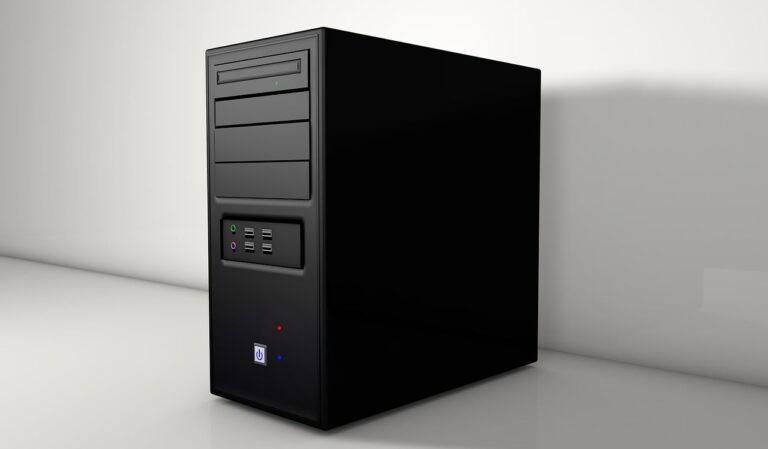
Memory (RAM and ROM):
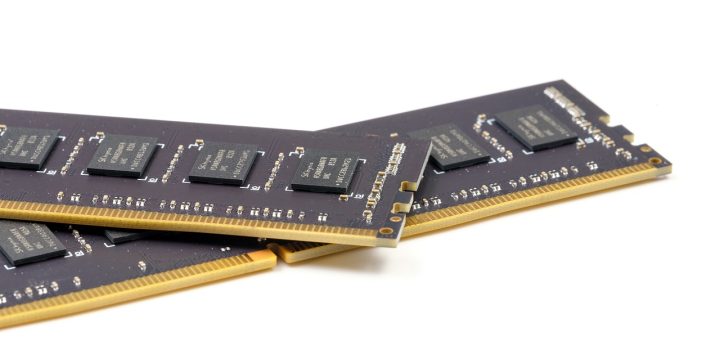
Random Access Memory (RAM)
Random Access Memory (RAM): Provides temporary storage for data that the CPU is currently using or processing. It allows for quick access to data, but the information is lost when the computer is powered off. There are several types of RAM (Random Access Memory), each representing different generations with varying speeds, capacities, and specifications.
The most common types of RAM include:
- DRAM (Dynamic Random Access Memory):
- SRAM (Static Random Access Memory)
- VRAM (Video Random Access Memory):
- LRDIMM (Load-Reduced DIMM):
- UDIMM (Unbuffered DIMM):
- SO-DIMM (Small Outline DIMM):
- ECC (Error-Correcting Code) RAM:
- HBM (High Bandwidth Memory):
Read-Only Memory (ROM)
Read-Only Memory (ROM): Read-Only Memory (ROM) is a type of non-volatile memory in a computer system that retains its data even when the power is turned off. Unlike Random Access Memory (RAM), which is volatile and temporary, ROM is used to store essential instructions and firmware that are integral to the computer’s operation. Contains firmware and essential system instructions.
It preserves information even in situations where the computer is powered down.
Key features of ROM include:
- Non-Volatile
- Firmware Storage
- Read-Only Access
Storage Devices:
Hard Disk Drive (HDD)
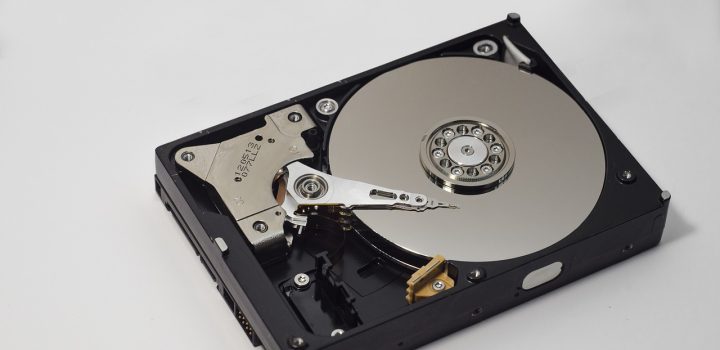
Hard Disk Drive (HDD):
A Hard Disk Drive (HDD) is a data storage device widely used in computers and electronic devices for long-term data storage. It consists of one or more magnetic platters that rotate rapidly, and data is read from or written to the platters using magnetic heads mounted on an actuator arm.
HDDs store data magnetically, with each platter divided into concentric circles called tracks, further subdivided into sectors. The combination of these tracks and sectors forms the basis for data organization. The spinning platters and moving actuator arm enable the rapid access and retrieval of data.
HDDs are known for their cost-effectiveness and high storage capacities, making them popular for mass storage in desktop computers, laptops, servers, and external storage devices. However, they are mechanical devices with moving parts, and this mechanical nature can make them susceptible to wear and tear over time. Offers high-capacity, non-volatile storage for long-term data retention.
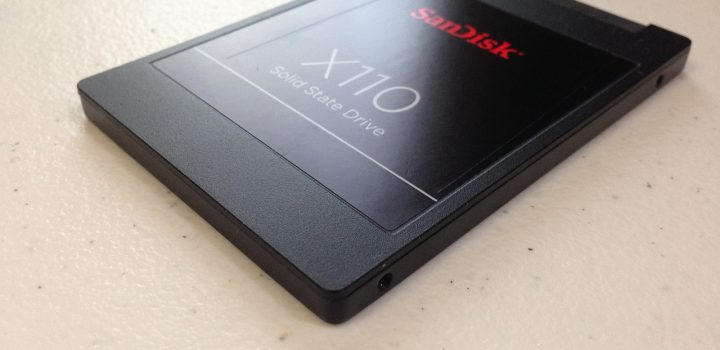
Solid State Drives (SSD)
Solid State Drive (SSD):
Solid State Drives (SSDs) are revolutionary storage devices that have transformed the landscape of data storage in computers. Unlike traditional Hard Disk Drives (HDDs), which rely on spinning magnetic disks, SSDs use NAND-based flash memory for data storage.
While SSDs offer numerous advantages, their main drawback is typically a higher cost per gigabyte compared to HDDs. However, the decreasing prices and increasing storage capacities of SSDs have made them more accessible to a broader range of users.
In summary, SSDs represent a significant advancement in storage technology, providing speed, durability, energy efficiency, and compact design, ultimately enhancing the overall computing experience. As prices continue to decrease, SSDs are becoming increasingly popular as the preferred storage solution for modern computers and devices.
Motherboard:
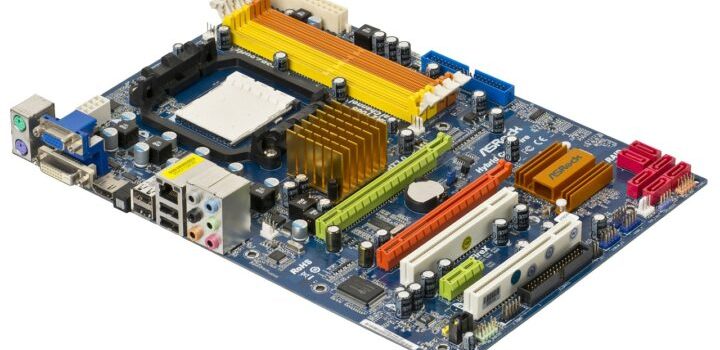
Motherboard: A motherboard, often referred to as the mainboard or logic board, is a crucial component in a computer system that serves as the central hub for connecting various hardware components. It provides a platform for the CPU (Central Processing Unit), memory, storage devices, and other essential peripherals to communicate and work together seamlessly. The main circuit board that connects and facilitates communication between various components. It serves as the central hub where the CPU, memory, and peripheral connectors are integrated.
Key features of a motherboard include:
Form Factor:ATX, Micro-ATX, and Mini-ITX,
CPU Socket:
RAM Slots:
Expansion Slots:
Chipset:
Connectivity Ports:
BIOS/UEFI Firmware:
Power Connectors:
The motherboard acts as the backbone of the computer, facilitating communication and coordination between different hardware components. Compatibility between the motherboard and other components, such as the CPU, RAM, and graphics card, is essential for building a stable and efficient computer system.
Power Supply Unit (PSU):
Power Supply Unit (PSU): Converts electrical power from an outlet into the appropriate voltage and current for the computer components. It supplies power to the motherboard and other peripherals.
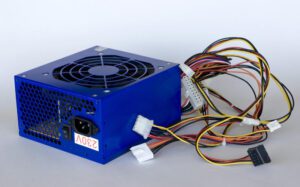
Graphics Processing Unit (GPU):
Graphics Processing Unit (GPU): Specialized hardware designed for rendering images and videos. It is crucial for graphics-intensive tasks like gaming and video editing.
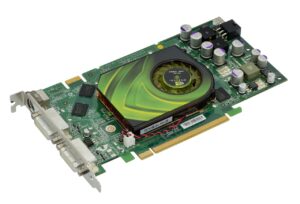
Software Components:
1. Operating System (OS)
Software that manages hardware resources and provides a user interface for interaction. There are some examples of this- Windows, macOS, and Linux.
2. Device Driver
Software that enables communication between the operating system and specific hardware components. Drivers ensure proper functionality and compatibility.
3. Application Software
Programs designed to perform specific tasks, such as word processors, web browsers, games, and multimedia applications.
4. Utilities
Software tools that assist in system maintenance, security, and optimization. There is some example of this antivirus programs, disk cleanup tools, and backup utilities.

